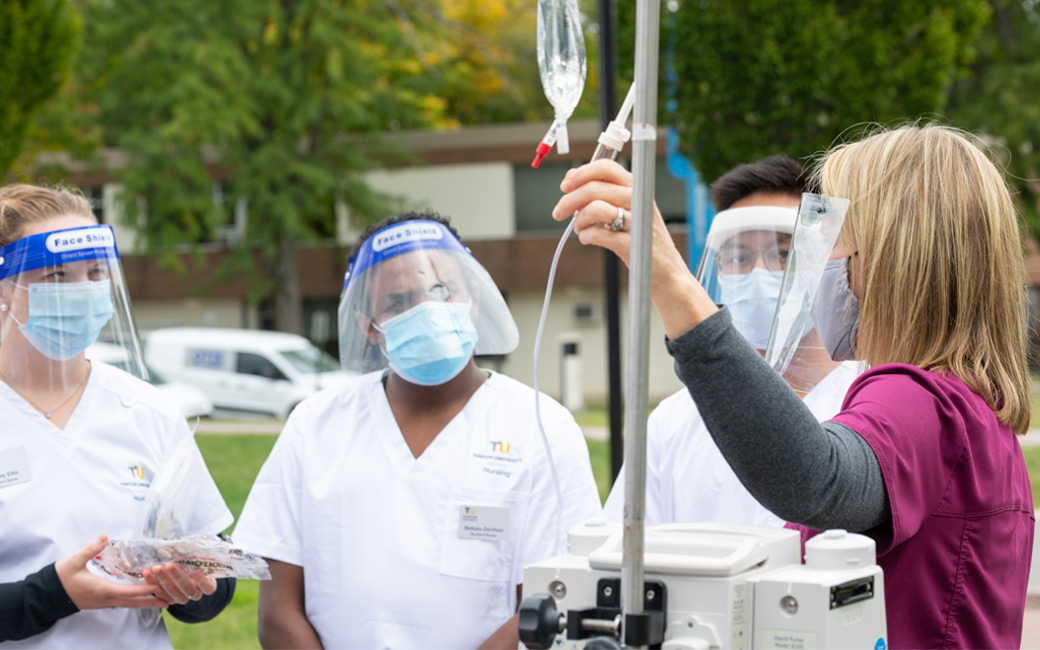Mask use on college campuses prevalent, experts say challenges remain
Faculty expert says new CDC study shows need for more education on campus mask wearing
By Cody Boteler on February 16, 2020

A new study from the Centers for Disease Control and Prevention (CDC) says people on college campuses wear masks 85.5% of the time and that 89.7% of people wearing masks wear them correctly.
The study “was demonstrating that, in general, there is pretty good compliance [with mask mandates] across student bodies and faculty/staff on college campuses,” says Marguerite Lucea, an assistant professor in the Department of Nursing whose background is in public health.
The observational study included six rural and suburban colleges with mask mandates in the southern and western United States and ran from September through November 2020. Mask wearing is required on Towson University’s campus, in accordance with local and state guidelines.
Lucea says she was “pleasantly surprised” to see such high levels of observed mask wearing.
Tigers Care
Protecting the health and wellbeing of the TU community depends on everyone who comes to campus. Read the important guidelines that TU is enforcing and following.
Public health officials agree wearing a mask is one of the most effective ways to prevent the spread of the virus that causes COVID-19. Proper mask wearing, combined with other measures like hand washing and physical distancing, are especially important to slow the spread of the novel coronavirus before a higher percentage of the population is vaccinated.
“That’s the way we’re going to get a handle on this,” Lucea says of masking and other measures. “The key thing is, you also have to make sure people understand the right method.”
The CDC has a full list of considerations for wearing a mask, including:
- A mask should completely cover your mask and mouth and fit snugly on the sides without leaving gaps
- Masks work best when everyone wears one; they are to protect others and yourself
- You should wash your hands or use hand sanitizer after touching or removing your mask
- Masks should not be made of loosely woven fabric that allows light to pass through
- Masks should not have just one layer or exhalation valves/vents
A recent study from the CDC says that wearing a disposable/surgical mask underneath a cloth mask can block nearly 93% of potentially infectious particles from spreading, further protecting against the transmission of the coronavirus. However, the new study has not caused the CDC to officially change its recommendations to include double-masking.
Because the CDC mask-use study showed a rate of just 76.7% correct mask wearing, Lucea says more education around how to properly wear a mask is important. Information about mask-wearing policies is important too, she says.
COVID Response & Planning
Returning to campus? Make sure you know the requirements to protect everyone’s health and safety.
In addition to education on how to wear a mask, enforced policies that require mask wearing are important to change behavior and get more people to wear masks, Lucea says.
“Universities, and each of us, have a responsibility to ensure the policies are being enforced,” she says. “It doesn’t have to be like a police state. It can be more like saying to someone, ‘Hey, the policy is when you’re inside you need to mask up.’ Or, if you see someone wearing a mask incorrectly, just gently correcting them.”